Graced with stunning scenery and varied biodiversity, Khangchendzonga National Park is a treat for tourists looking for a memorable experience. Named after the revered Mount Khangchendzonga, the park is home to a variety of flora and fauna, including rare and endangered species. Each year Khangchendzonga National Park attracts many nature lovers, researchers, and environmentalists from around the world. The pristine beauty and ecological significance of the park make it an important part of Sikkim’s natural legacy.
Location Of Khangchendzonga National Park
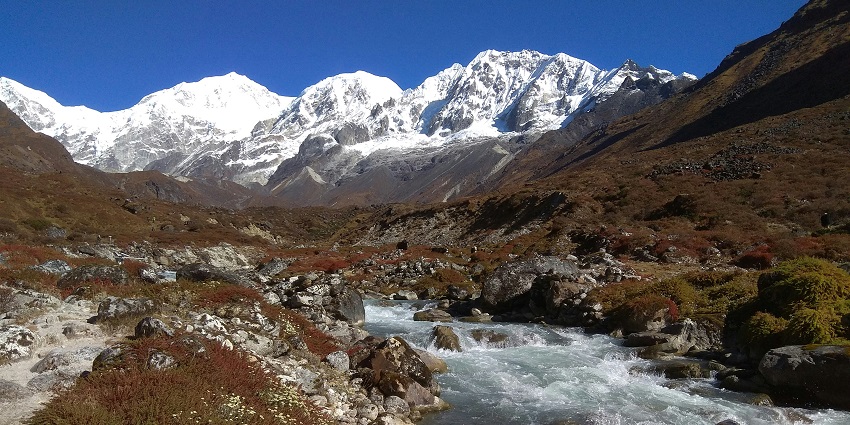
Located in Sikkim’s west and north districts, Khangchendzonga National Park has a northern boundary with Tibet’s Qomolangma National Nature Preserve and a western border with Nepal’s Kanchenjunga Conservation Area. The park has a unique mix of plains, rivers, valleys, lakes, and spectacular snow-covered mountains. It is home to around eighteen glaciers, including the spectacular Zemu Glacier.
Suggested Read: Go Trekking In Sikkim For A Soulful And Exhilarating Scenic Journey
How To Reach Khangchendzonga National Park
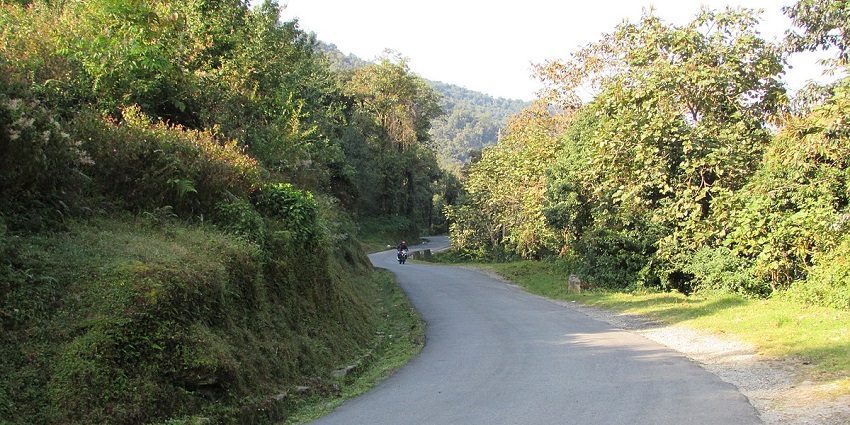
Photo: Masum Ibn Musa / Wikimedia Commons
Tourists can reach Khangchendzonga National Park by various modes of transportation, ensuring a convenient and accessible journey for everyone.
By Road: The National Highway 31A, a 92-kilometer route between Gangtok and Sevok in Darjeeling, is the closest highway to the National Park in Sikkim. Furthermore, it just takes 45.9 kilometres to get there from Gangtok. The closest towns are Chungthang in the north and Yuksom in the west. Gangtok is the city closest to Kanchenjunga National Park. Regular bus services are offered between Gangtok and Bagdogra, covering a four-hour journey.
By Rail: The nearest railway station to Khangchendzonga National Park is New Jalpaiguri Station, approximately 120 km from Gangtok. It is well-connected to other major towns in the country, including Delhi, Kolkata, and Guwahati. Once you arrive at the New Jalpaiguri Station you can take a taxi to Gangtok, from there you can proceed to Yuksom and other entry points to the Park.
By Air: The closest airport by air is Bagdogra Airport, located in Darjeeling, West Bengal; it’s around 122 kilometres from Gangtok, the capital of Sikkim. Additionally, it is 45.9 kilometres from Gangtok to Khangchendzonga National Park. Alternatively, you can take a taxi from Bagdogra Airport and drive straight to the park.
Things To Do At Khangchendzonga National Park
At Khangchendzonga National Park you can uncover its many wonders and trek through scenic trails, marvel at rhododendron trees, and enjoy the serene Samiti Lake.
1. Trekking And Hiking
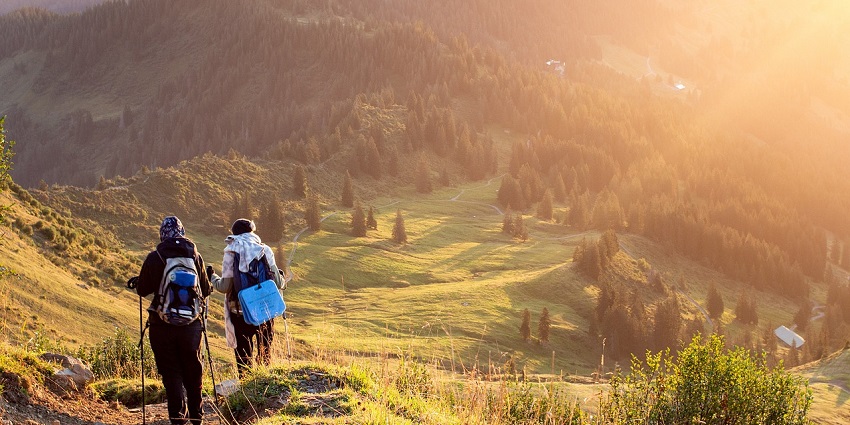
Photo: zapCulture / Pixabay / Image For Representation Only
Khangchendzonga Park has numerous trekking trails for trekkers looking for a thrilling experience. The Goecha La Trek is the most popular, offering stunning views of Mount Khangchendzonga and its surrounding peaks. This challenging yet fun trek takes you through lush green forests to the high-altitude landscapes. For tourists who prefer short treks, there are shorter trails to Dzongri and Thangshing which are equally adventurous. On these trek routes, you can explore dense rhododendron forests, alpine meadows, and pristine glacial lakes.
Suggested Read: Cascading Waterfalls In Sikkim That Are Not To Be Missed
2. Wildlife Watching
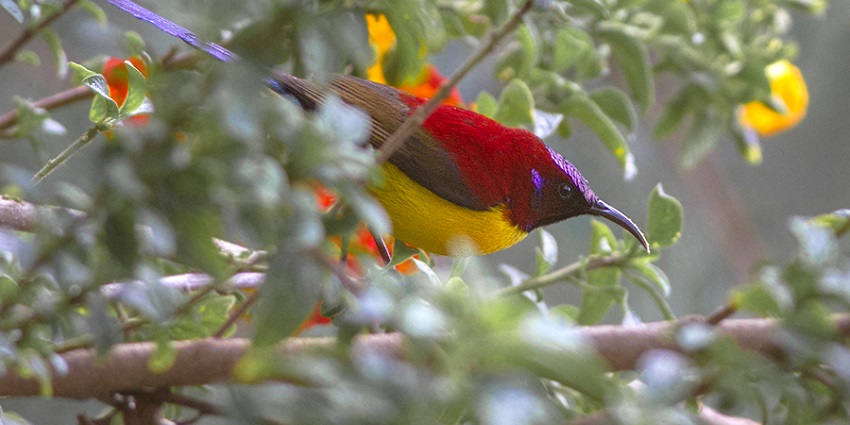
Photo: Dibyendu Ash / Wikimedia
A bird watcher’s paradise, Khangchendzonga National Park has over 550 species of birds. You will find species such as the Blood Pheasant, Satyr Tragopan, and the Himalayan Monal. The best time for bird watching is early morning and late afternoon. The park is also home to rare and endangered species such as snow leopards, red panda, and Himalayan tahr. It is advisable to explore the park with a qualified guide as your chances of spotting the rare animals and birds in their natural habitat.
3. Photography
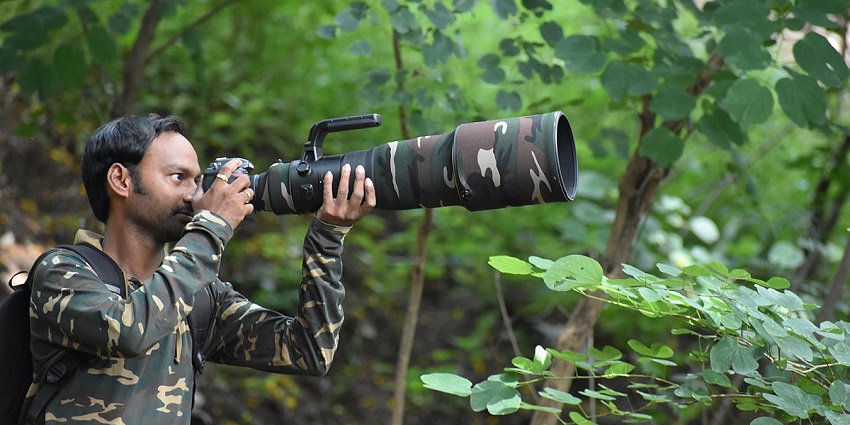
Photo: Shiv’s fotografia / Wikimedia Commons / Image For Representation Only
Khangchendzonga National Park is a picturesque paradise for photographers, with diverse landscapes, snow-covered peaks, and verdant valleys. Its stunning scenery offers endless opportunities for capturing nature’s beauty. Wildlife photographers can photograph rare animals like the snow leopard, red panda, and Himalayan black bear, while birdwatchers can capture vibrant species like the blood pheasant and satyr tragopan. The park’s varied ecosystems, from lush forests to alpine meadows, ensure an array of captivating subjects, making each visit a unique and rewarding adventure.
Suggested Read: Go Camping In Sikkim At These Places To Witness The Alluring Beauty of Sikkim
4. Camping
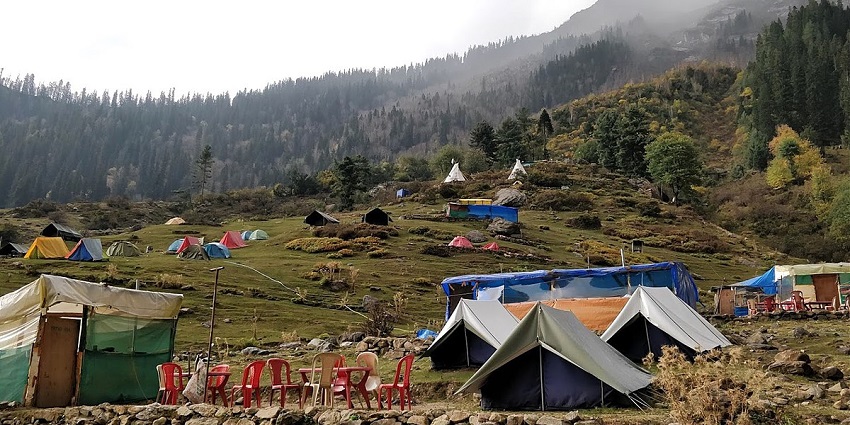
Photo: Photos Worldwide / Wikimedia Commons
Camping in the wilderness of Khangchendzonga Park is an experience that allows you to fully immerse yourself in its natural beauty. You can set up camp near the glacial lakes or in snow-capped meadows and enjoy the tranquillity of the park. It is a stunning sight in the nighttime where you can view the canopy of stars. It is advisable to carry a garbage bag to dispose of the waste to keep the park clean and eco-friendly.
5. Nature Walks
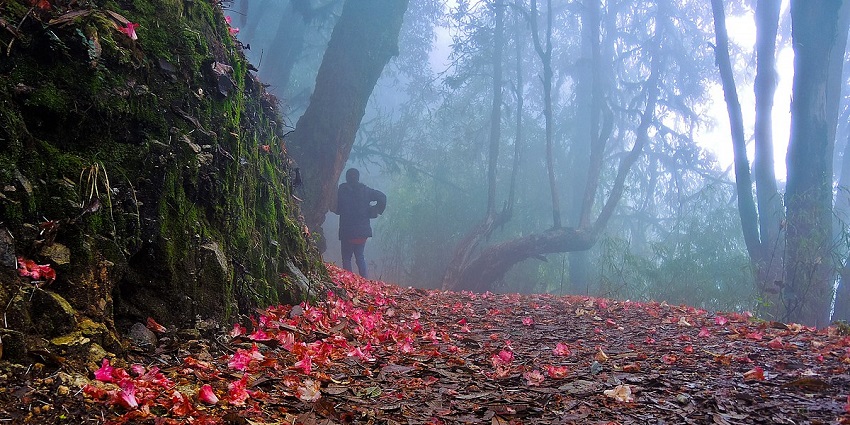
Photo: Spattadar / Wikimedia Commons / Image For Representation Only
There is nothing more satisfying than taking a leisurely walk in the lush forests of Khangchendzonga Park. These guided nature walks enable you to understand and admire the flora, and fauna of the park. Most importantly it provides a deeper understanding of the park’s conservation efforts and biodiversity. Take time to stroll and observe the tiny details, from the patterns on tree barks to the tracks left by the animals.
Suggested Read: Top Offbeat Places In Sikkim For Your Next Surreal Trip
6. Adventure Activities
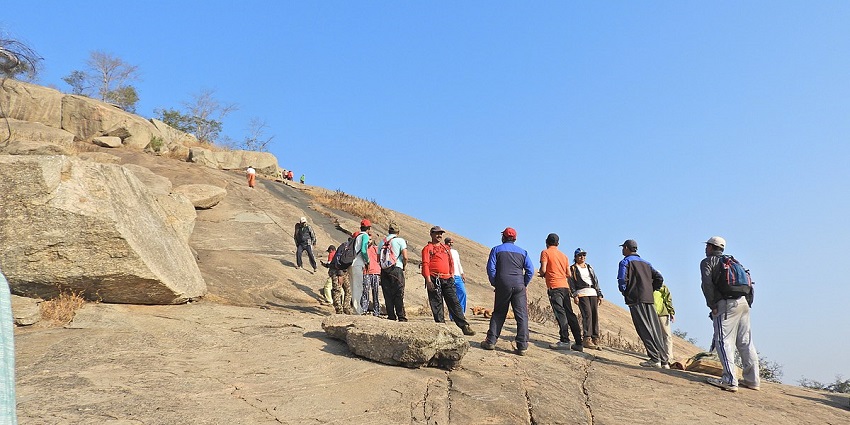
Photo: Sumita Roy Dutta / Wikimedia Commons / Image For Representation Only
The rugged terrain of Khangchendzonga National Park offers adventurous rock climbing opportunities and memorable experiences for thrill-seekers. But ensure to hire a local guide to navigate and explore the best spots safely. Some trekking routes involve crossing rivers and streams, so make sure you have appropriate gear and guidance for these adventures.
Where To Stay Near Khangchendzonga National Park
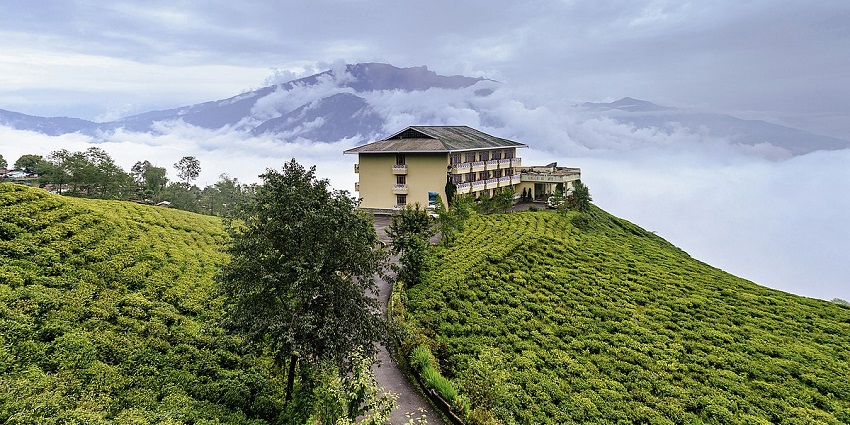
Photo: Subhrajyoti07 / Wikimedia Commons
For a visit to Khangchendzonga National Park, consider staying in the charming town of Yuksom, which is often referred to as the gateway to the park. Yuksom offers a range of accommodations from cosy homestays to comfortable mid-range hotels. The quaint town not only provides easy access to the park’s stunning landscapes and trekking trails but also immerses visitors in the serene beauty and rich culture of the Sikkimese region. Staying in Yuksom allows you to experience local hospitality while being surrounded by breathtaking views of the Himalayas.
Suggested Read: The Best Adventure Sports In Sikkim To Try On Your Next Vacation
Where To Eat Near Khangchendzonga National Park

Photo: Pema Yangden Lepcha / Wikimedia Commons
Visitors to Khangchendzonga National Park can enjoy a delightful mix of local Sikkimese and international cuisines at nearby eateries. Taste of Sikkim offers traditional dishes like Gundruk soup and Phagshapa. Hotel Mount Pandim’s Restaurant serves Indian and Chinese cuisine with stunning mountain views. For a cosy atmosphere and continental dishes, Cafe Infinity in Pelling is an excellent choice. These restaurants ensure a memorable culinary experience amidst the park’s breathtaking natural beauty.
Other Factors To Consider
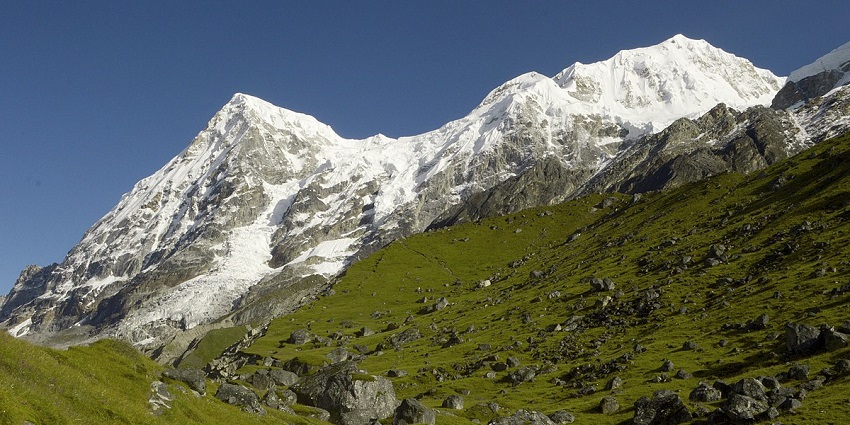
Photo: G Devadarshan Sharma / Wikimedia Commons
Khangchendzonga National Park Ticket Price: The ticket prices for Khangchendzonga National Park are as follows:
- Indian nationals: Rs. 300 per person for the first seven days, and Rs. 40 for each additional day.
- Foreign nationals: Rs. 560 per person for the first seven days, and Rs. 80 for each additional day.
- Students: Rs. 80 for the first seven days, and Rs. 20 for each additional day.
Suggested Read: Places To Visit Near Gangtok For An Ideal Getaway
Khangchendzonga National Park is more than just a destination; it’s a journey into the heart of nature’s splendour. Whether you’re trekking its majestic trails, spotting rare wildlife, or soaking in serene landscapes, the park offers an unforgettable, refreshing, and inspiring experience. Embrace the ultimate escape into the lap of Mother Nature. Ready to explore Khangchendzonga National Park? Book your adventure with TripXL today and experience nature like never before!
Cover Photo: G Devadarshan Sharma / Wikimedia Commons


 WhatsApp
WhatsApp
 Twitter
Twitter









